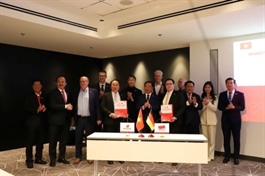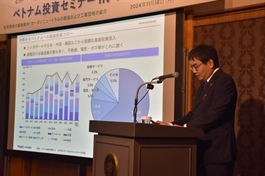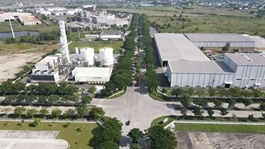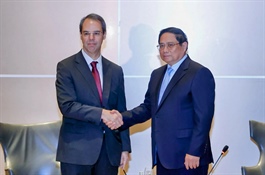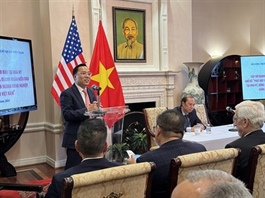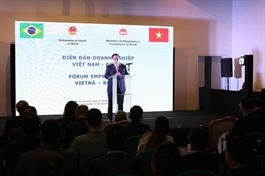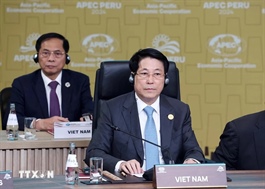Foreign-invested enterprises drive logistics investment in the southeast region
Foreign-invested enterprises drive logistics investment in the southeast region
Foreign-invested enterprises are intensifying their investments in the logistics sector in Vietnam’s southeast region, capitalising on its strategic advantages and the imminent completion of major infrastructure projects such as airports and highways.
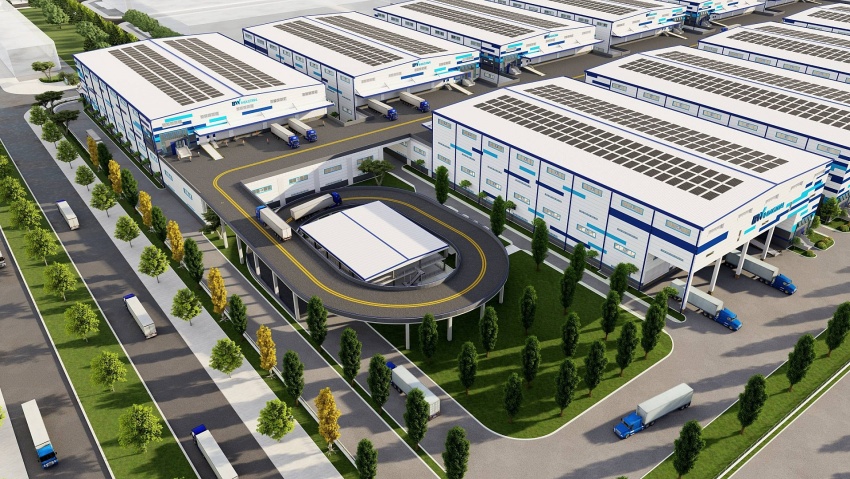
The region's attractiveness has led to a surge in demand for land in provinces like Dong Nai, Binh Duong, Ba Ria-Vung Tau, and Ho Chi Minh City, where foreign-invested enterprises (FIEs) are establishing logistics hubs to meet growing market demands.
In October, Binh Duong province approved several large-scale logistics projects, including the Sembcorp Binh Duong Infrastructure Services project, which will develop a warehouse and factory system with a total investment of $51.5 million, and the ICD Rach Bap Dry Port project, with an investment of over $57 million.
Binh Duong’s industrial parks continue to attract foreign investors, driven by the province’s consistent expansion of industrial zones to accommodate foreign enterprises. A.P. Moller Maersk Group from Denmark is among the prominent players planning a large-scale logistics center in the province for long-term operations.
Additionally, Warburg Pincus Group from the United States has collaborated with local infrastructure developer Becamex IDC to establish the Cross-border E-commerce Centre in Binh Duong New City. Spanning 75 hectares, this high-tech facility will feature air freight warehouses, bonded storage, and cross-border e-commerce capabilities, alongside other advanced infrastructure.
Dong Nai province is also a hotspot for logistics investment. In late October, KCN Vietnam launched its latest project in Nhon Trach VI Industrial Park, a 14.5-hectare development expected to deliver nearly 100,000 square metres of LEED Gold-standard ready-built warehouses in 2025.
Earlier this year, Dong Nai approved the SLP Park Loc An-Binh Son project, a $121.4 million investment by Singapore's Global Logistics Partner (GLP) Group, to construct logistics facilities in Long Thanh district. The province had already issued investment registration certificates for several FDI-backed logistics projects, such as the 64.4-hectare BW Logistics Centre in Long Thanh and the 16.8-hectare Cainiao Logistics Centre in Trang Bom district.
Jang Bok Sang, vice president of the Korean Association of Commerce and Industry, highlighted Korean businesses’ growing interest in Dong Nai’s logistics infrastructure.
“If Dong Nai ensures sufficient land availability, simplifies administrative procedures, and reduces document processing times, significant capital from Korea will flow into this sector,” Sang told VIR.
Ba Ria-Vung Tau province, home to the Cai Mep-Thi Vai deepwater port complex capable of direct shipments to Europe and the United States, is also seeing heightened activity in the logistics sector. Thai corporation WHA Group, a leader in logistics and industrial park infrastructure, is preparing to expand its operations in the southeast region.
According to Julien Nha Vinh Nguyen, country head of WHA Vietnam, the southeast region holds immense potential for logistics development due to its dense network of large industrial parks and rapidly improving road infrastructure. Long Thanh International Airport, expected to commence operations in 2026, will further enhance the region’s logistics connectivity.
“In general, the Southeast region has many strengths and high potential for investment in the logistics industry,” Nguyen said.
He also noted the importance of key projects like Long Thanh and the region’s expressways in attracting foreign investments.
Despite the region’s advantages, high land prices for logistics warehouses have been a concern for foreign investors over the past three years, driven by limited supply. Provinces like Dong Nai, Binh Duong, and Ba Ria-Vung Tau recently announced master plans for expanding land funds for industrial and logistics parks, aiming to address this issue.
“The increasing available land will pull down land prices and create better conditions for investors to pour capital into the logistics field,” Nguyen commented.
As the southeast region continues to enhance its infrastructure and expand industrial zones, FIEs remain optimistic about its potential as a logistics hub, further solidifying its role in Vietnam’s economic development.




